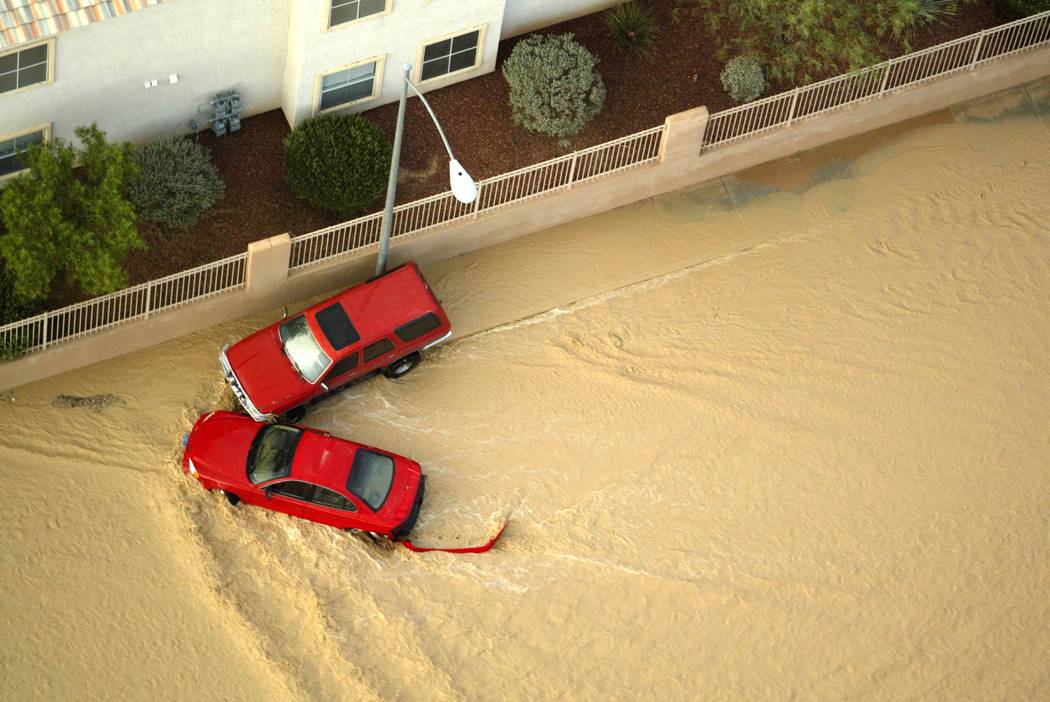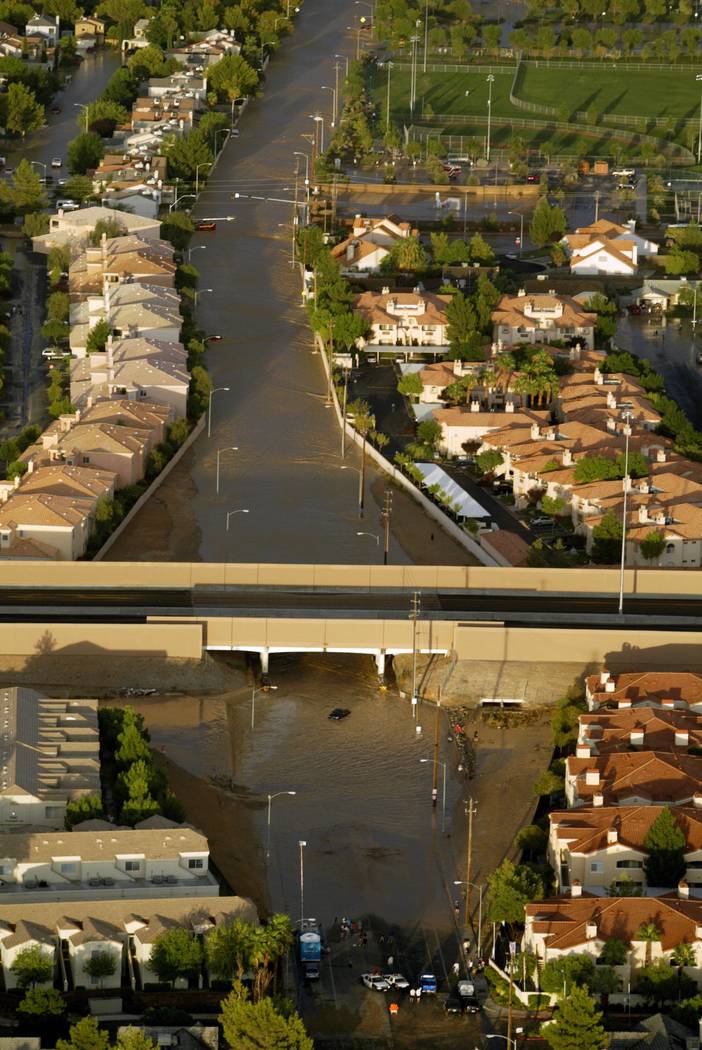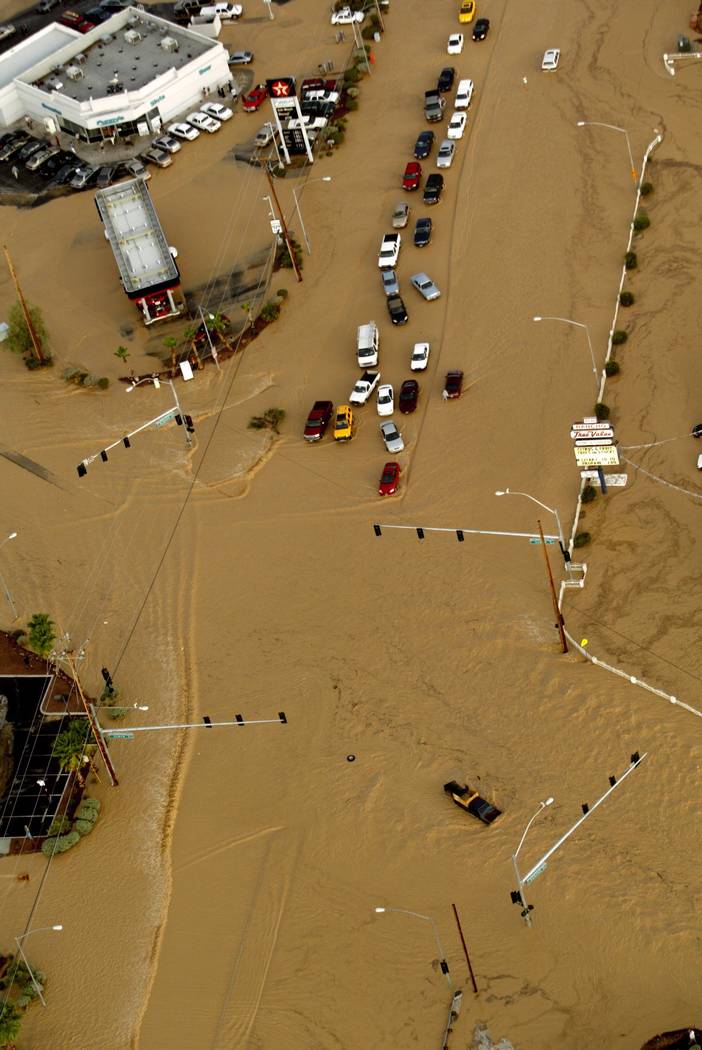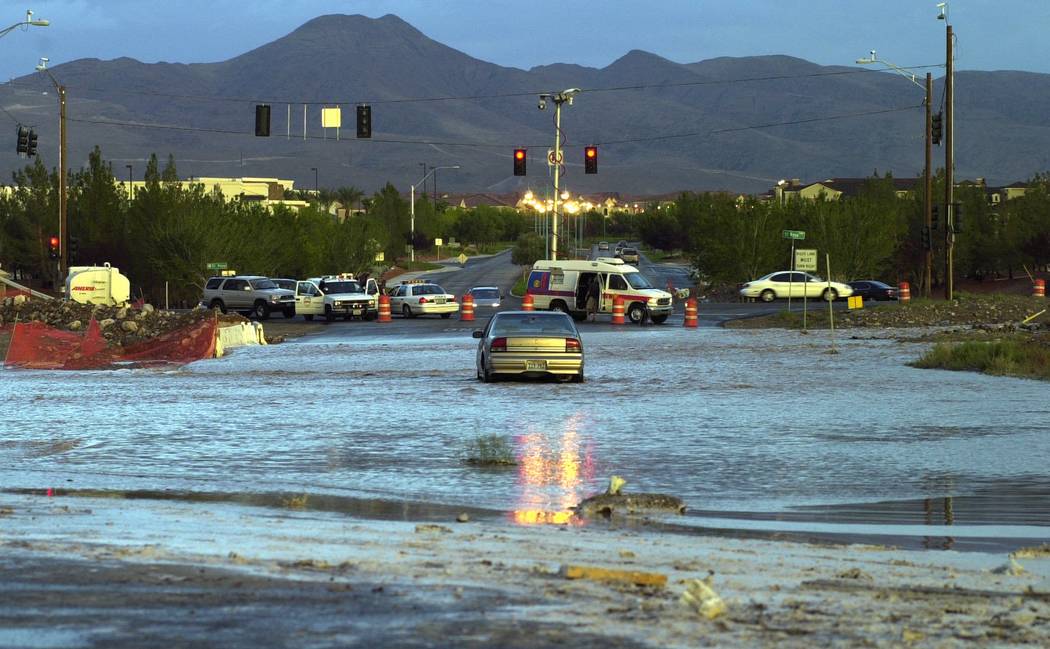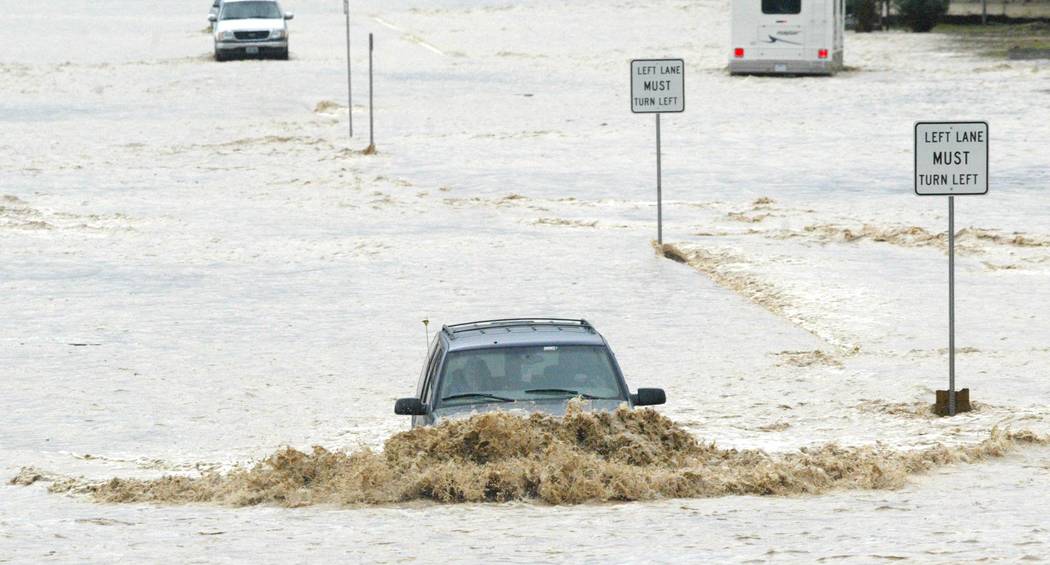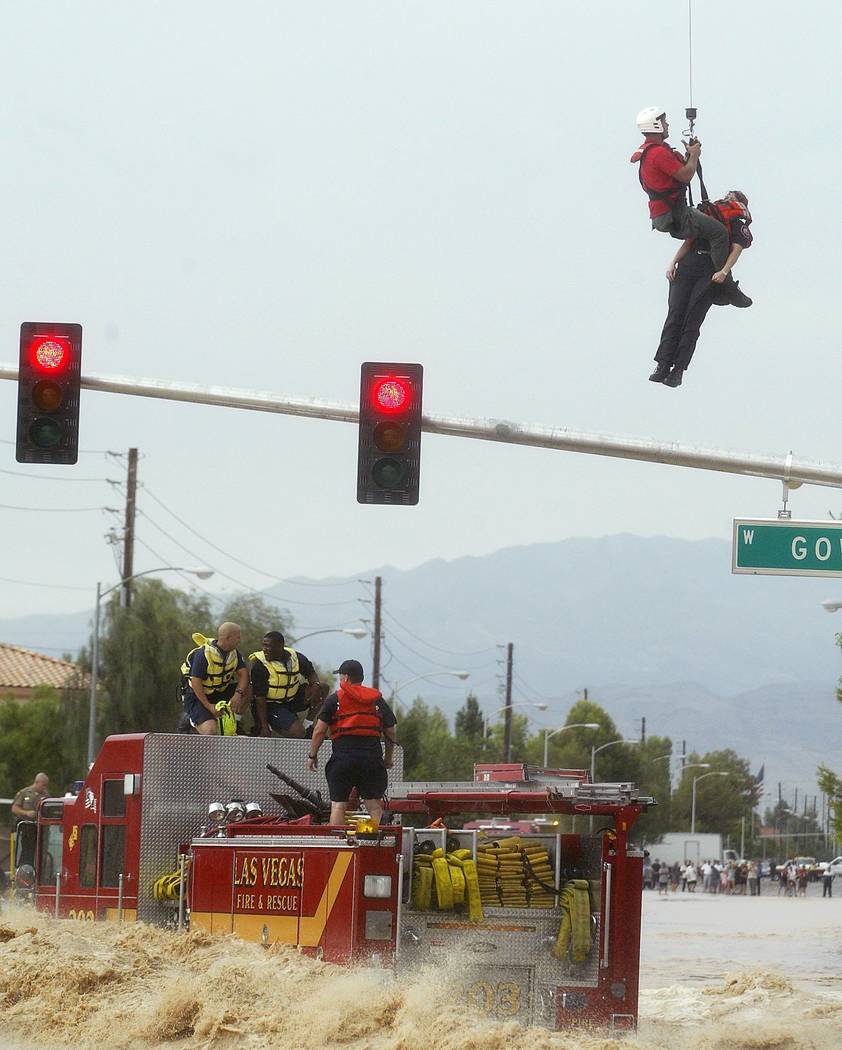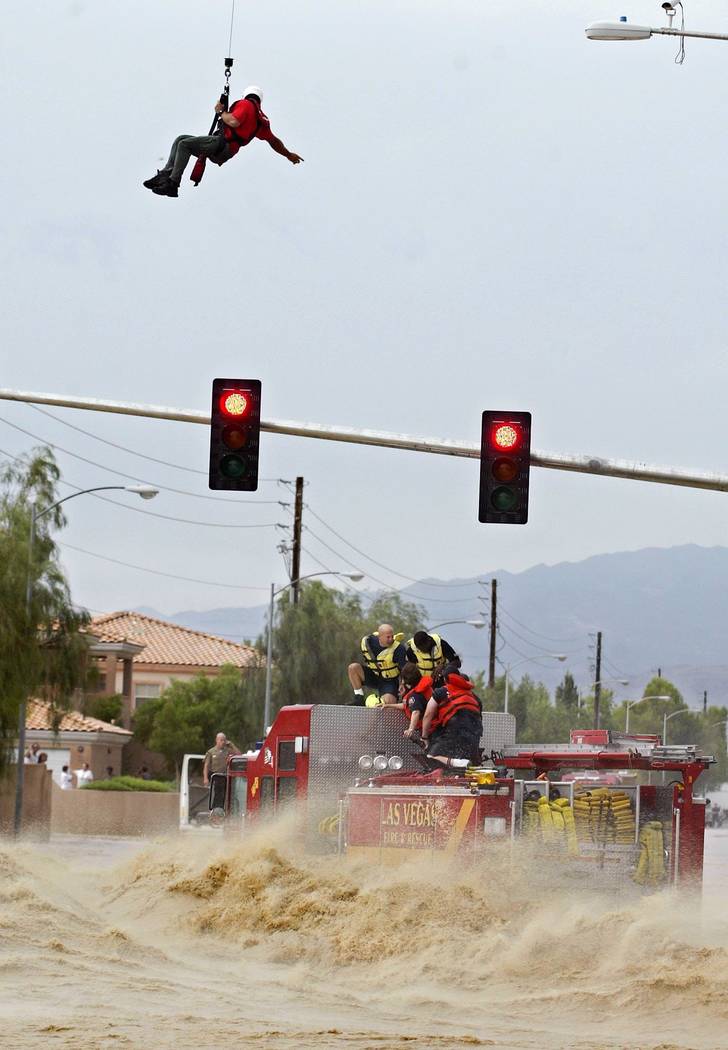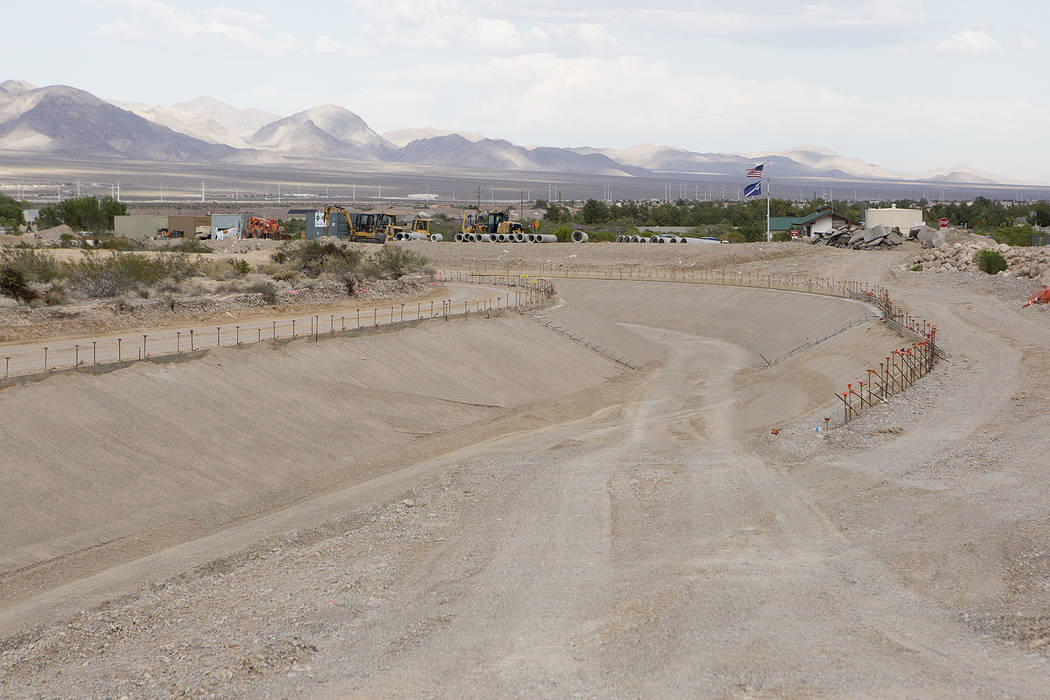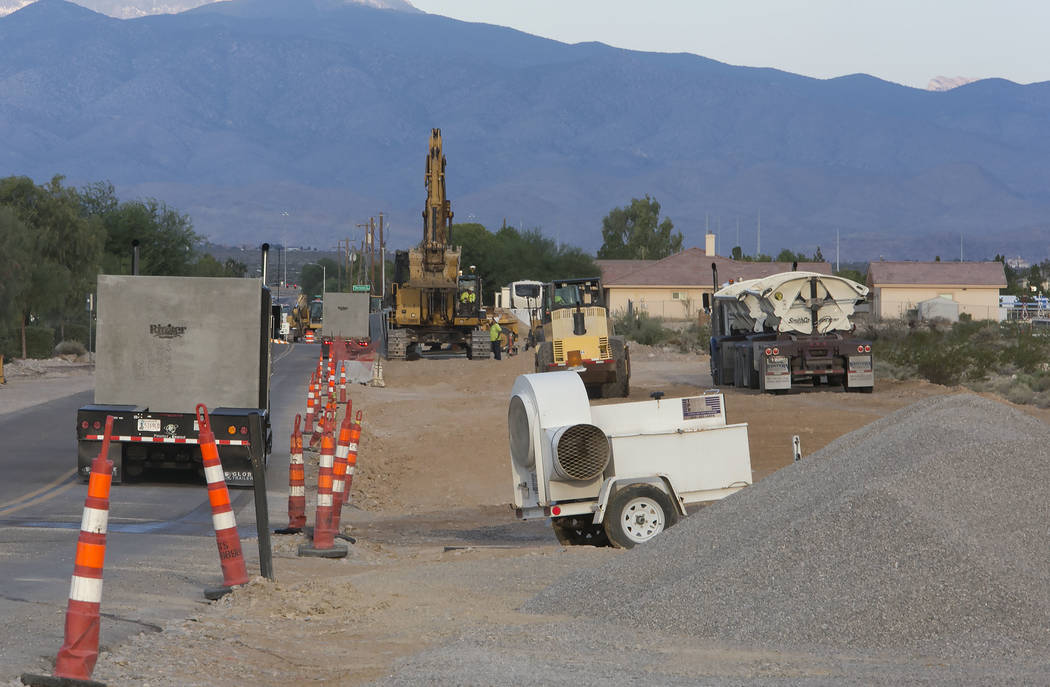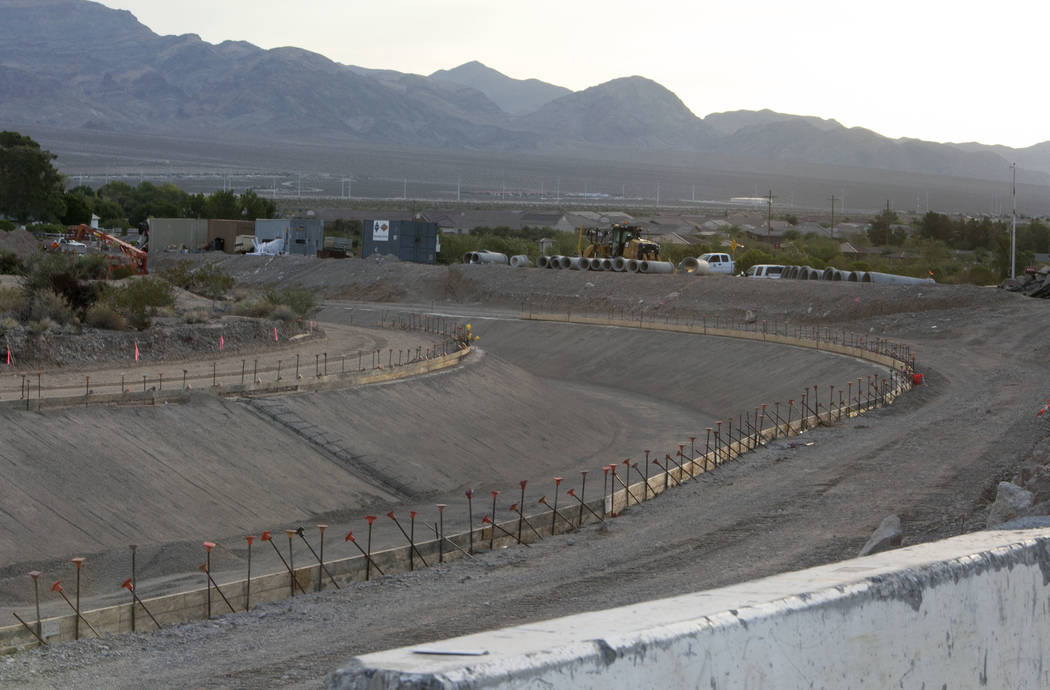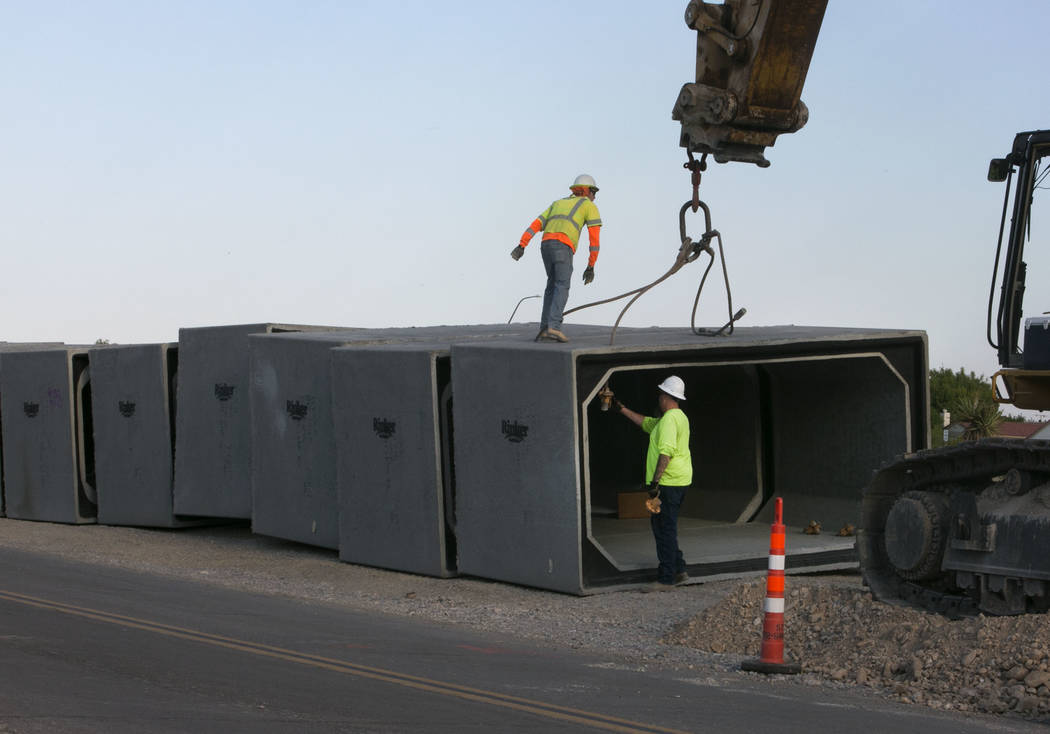Flood control district aims to reduce the risk in Las Vegas Valley
Hurricane Harvey flooded areas of Houston with more than 4 feet of rainfall in five days, but it took only a fraction of that to submerge Las Vegas neighborhoods in August 2003.
The 3 inches of rain that fell in 90 minutes caused flash flooding that closed a portion of U.S. Highway 95, rendered a responding fire truck immobile and sent people scrambling to their rooftops for rescue by helicopter.
“The entire northwest of Las Vegas was navigable by boat. It was a mess,” Clark County Regional Flood Control District spokeswoman Erin Neff said. “What they’ve experienced in Houston, if that happened here in Las Vegas, we would have Noah’s Ark-proportion flooding.”
The sunny Las Vegas Valley averages 4 inches of rain per year, according to the National Weather Service. So in this Mojave Desert terrain, even an inch can cause mayhem. Since 1960, there have been 32 flood-related deaths in Clark County, Neff said.
“We don’t have natural creeks. We don’t have natural rivers here,” she said. “Our soil is rock-solid. We are surrounded by mountains. There is nowhere for the water to go.”
Moving stormwater
The flood control district remedied that by coupling man-made detention basins and drainage channels with nearly 130 miles of natural washes to send stormwater to Lake Mead.
“All that rain that dumps on Mount Charleston and the Spring Mountains has to go somewhere,” said National Weather Service meteorologist Chelsea Kryston. “The natural drainage area is to the northwest side of the Las Vegas Valley.”
Neff said that’s why the 32-year-old flood district’s first two major construction projects were Red Rock Detention Basin and Kyle Canyon Detention Basin.
“We started by putting a bulwark against the worst natural potential, which is flooding out of the Spring Mountains,” she said. “Each year we do a little bit in each region to get toward our ultimate goal.”
100-year events
The rainfall and flooding in Houston has been described as a “500-year” event, which refers to the probability a weather event will occur. In this case, Hurricane Harvey brought conditions that areas of Houston have a 1-in-500 chance of experiencing in any given year.
The Harris County Flood Control District reports that about 1 trillion gallons of rain fell across Houston and the rest of the county from Friday through Monday.
That’s close to the same volume of water that travels over Niagra Falls in 15 days, or less than one-ninth the capacity of Lake Mead.
Las Vegas has never seen a 500-year flood event, Neff said. But in recent history, it has been hit with at least three 100-year events, which have a 1 percent chance of happening in any year.
Caesars Palace famously flooded in July 1975 in a widespread storm that killed two North Las Vegas men and caused an estimated $4.5 million in damage.
A storm in July 1999 increased the flow of water through the Las Vegas Wash to 80 times its typical rate. The 2003 storm in northwest Las Vegas was also a 100-year event.
Catching up to growth
Until about two years ago, William Randall would sit on his front porch in a lawn chair every time it rained.
Without fail he’d watch the water rise from the street and creep up his sloped yard. Once the floating garbage started heading south toward the nearby Desert Rose Golf Course, now named Club at Sunrise, he knew the water was receding.
But a project by the Regional Flood Control District finished in 2015 has made a world of diffrence, Randall said. It also brought 1,700 nearby homes out of a high-risk flood zone.
“I don’t even think about it anymore,” Randall said of the rain. “It drains out so fast now it doesn’t even get over the sidewalk.”
The countywide district has completed about $1.8 billion in flood control projects funded by sales tax since its inception in 1985.
Neff said the district is considered to have one of the best flood control systems in the southwestern United States, but plenty of work remains. Workers are still catching up to the population swell the valley experienced in the 1990s and early 2000s.
“There was no way we could build flood control quickly enough for that explosive growth,” Neff said. “We still have 20 to 30 more years to go to be at complete build-out.”
Contact Michael Scott Davidson at sdavidson@reviewjournal.com or 702-477- 3861. Follow @davidsonlvrj on Twitter.
Flood insurance: Not necessary, but advised
A typical homeowner's insurance policy does not cover flood damage. So who should invest in the specialized coverage?
For starters, the Federal Emergency Management Agency requires anyone who lives in a high-flood-risk area to purchase the insurance. More than 11,600 parcels of land in Clark County are located in such zones. Maps of those areas can be found online at ccrfcd.org/floodzoneapp.htm.
Neff said policies in high-flood-risk areas can be pricey. She recommends anyone who lives in a low lying area, near a wash or street prone to flooding, or at the bottom of a cul-de-sac invest in the insurance.
FEMA calls flooding "the most common natural disaster" in the U.S. but as of June 30 the agency reported only about 12,500 flood insurance policies were active in Nevada.
"If you don't live in a flood zone, your flood insurance would only cost about $1 a day," Neff said.
Close to $44 million in flood insurance claims have been made in Nevada since 1978, according to FEMA data.




